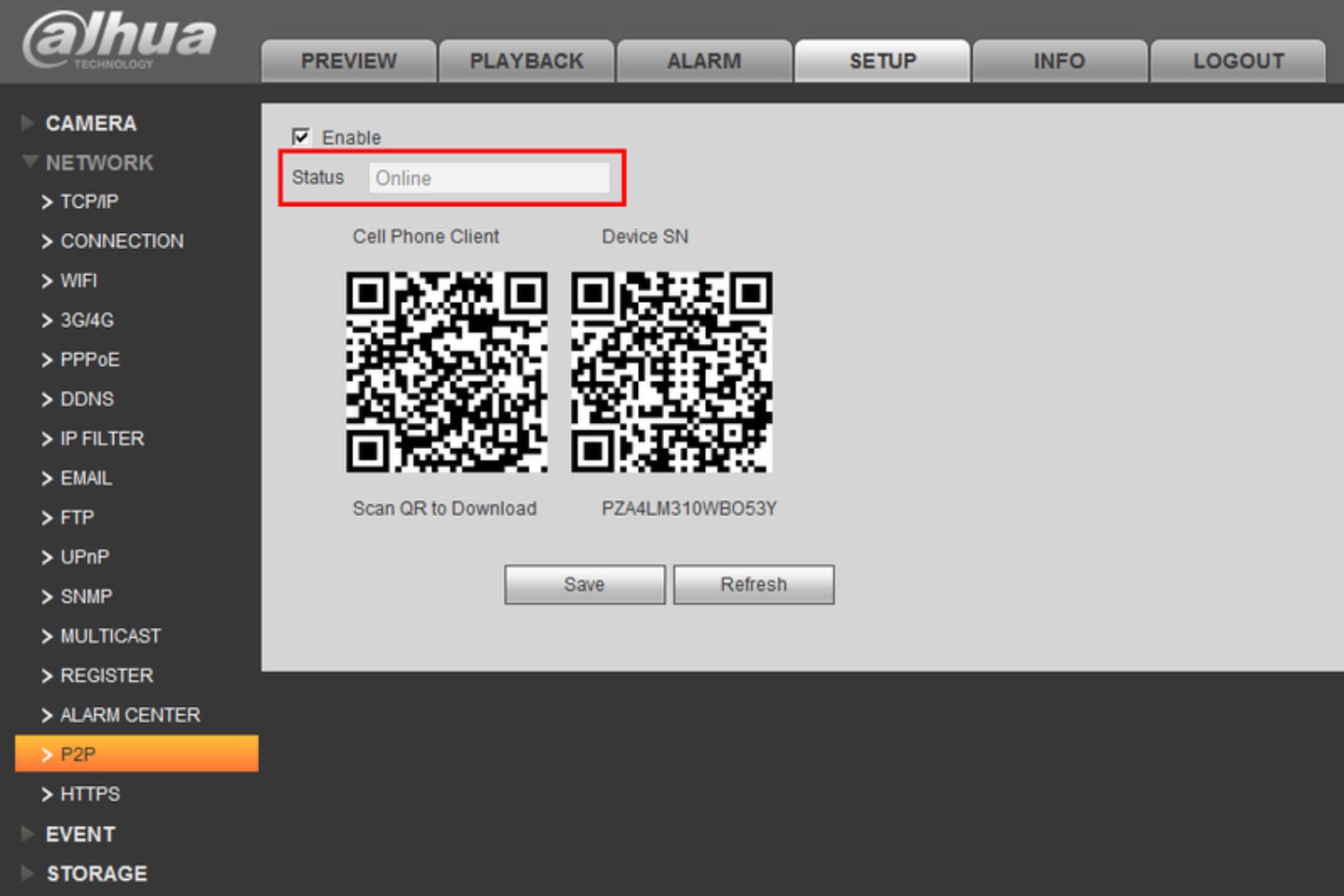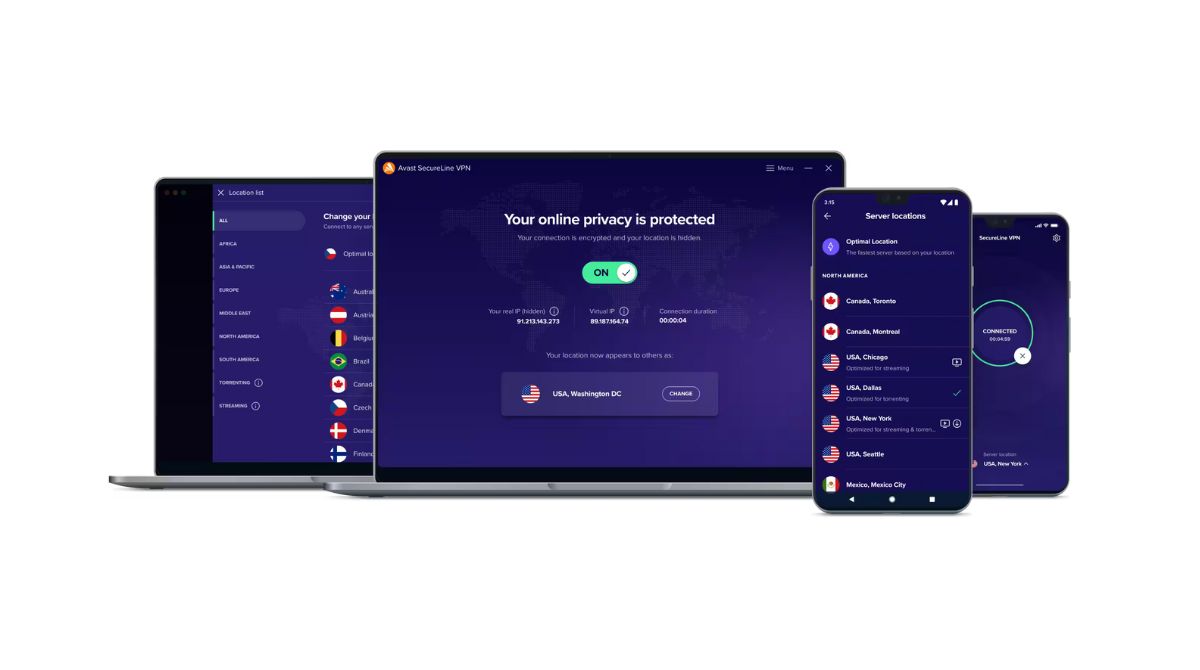Introduction
Welcome to the world of peer-to-peer (P2P) networks! In today’s digital age, where sharing files and resources has become an integral part of our daily lives, understanding how to set up a P2P network can prove to be invaluable. Whether you are a small business looking for a cost-effective solution or an individual wanting to share files effortlessly, a P2P network can offer numerous benefits.
But what exactly is a P2P network? In simple terms, it is a decentralized network where computers and devices communicate directly with each other, rather than relying on a central server. This allows for the efficient sharing of files, resources, and information between connected devices. Unlike traditional client-server networks, P2P networks distribute the workload across participants, making them highly scalable, resilient, and less vulnerable to single points of failure.
There are several reasons why you might consider using a P2P network for your file sharing needs. Firstly, P2P networks are often faster than traditional download methods, as they utilize the combined bandwidth of all connected devices. This means that you can download and upload files at higher speeds, saving you valuable time.
Secondly, P2P networks offer a decentralized approach to file sharing, meaning that there is no reliance on a single server or entity. This provides greater privacy and security, as your files are not stored on a central server that could be susceptible to hacking or data breaches.
Additionally, P2P networks foster a sense of collaboration and community. By joining a P2P network, you gain access to a vast pool of shared resources and files, giving you the opportunity to discover new content and connect with like-minded individuals or businesses with similar interests.
In the following sections, we will guide you through the process of setting up a P2P network, from defining your network goals to troubleshooting common issues. By the end of this guide, you will have the knowledge and confidence to establish your own P2P network and enjoy the benefits it brings. So let’s dive in and explore the exciting world of P2P networks!
What is a P2P Network?
A peer-to-peer (P2P) network is a type of network architecture where computers and devices connected to the network communicate directly with each other, without the need for a central server. In a P2P network, each device can act as both a client and a server, allowing for the sharing of files, resources, and information. This decentralized approach to networking has revolutionized the way we share and distribute content online.
In a traditional client-server network, files and resources are stored on a central server, and client devices request access to those resources. The server acts as a mediator, handling all the requests and delivering the requested content to the clients. While this approach works well for many scenarios, it can become a bottleneck when there is a high demand for resources or if the server fails.
In contrast, a P2P network removes the need for a central server by enabling devices to directly communicate with each other. Each device, or peer, on the network can share its resources and request resources from other peers. This allows for a more efficient distribution of workload and ensures that the network is not dependent on a single point of failure. If one peer goes offline, the network can still continue functioning as long as there are other peers available.
One of the defining features of P2P networks is their scalability. As more devices join the network, the available resources and bandwidth increase, leading to a more robust and efficient network. This scalability makes P2P networks ideal for situations where there is a dynamic and changing number of participants, such as file sharing platforms or collaboration tools.
P2P networks also offer advantages in terms of speed and efficiency. When downloading or uploading files in a P2P network, the file is divided into smaller chunks, and each chunk can be downloaded from multiple peers simultaneously. This parallel downloading not only speeds up the process but also reduces the strain on individual peers by distributing the workload. Additionally, P2P networks can make use of the combined bandwidth of all connected devices, further enhancing the overall speed and performance of file transfers.
Overall, P2P networks provide a decentralized and efficient way of sharing and distributing files and resources. By eliminating the need for a central server and enabling direct communication between peers, P2P networks offer greater scalability, speed, and resilience. In the next sections, we will explore the benefits of using a P2P network and guide you through the process of setting one up.
Why Use a P2P Network?
There are several compelling reasons why you might choose to use a peer-to-peer (P2P) network for your file sharing and resource-sharing needs.
1. Efficient File Sharing: P2P networks offer faster and more efficient file sharing compared to traditional client-server networks. This is due to the parallel downloading and uploading of files across multiple peers. By utilizing the combined bandwidth of all connected devices, P2P networks can significantly speed up file transfers, reducing the time needed to download or upload large files.
2. Decentralization: Unlike client-server networks that rely on a central server to store and distribute files, P2P networks are decentralized. This means that there is no single point of failure or dependence on a central authority. Files are distributed across the network, and each device acts as both a client and a server, ensuring that the network remains robust and accessible even if certain devices go offline.
3. Privacy and Security: P2P networks provide an added layer of privacy and security. Since files are not stored on a central server, there is no single target for potential hacking or data breaches. Instead, files are distributed across multiple peers, making it more difficult for unauthorized individuals to access sensitive information. Additionally, many P2P software and protocols implement encryption and authentication measures to protect the privacy and integrity of data being shared.
4. Collaboration and Community: Joining a P2P network opens up a world of collaboration and community. You can connect with like-minded individuals or businesses with similar interests and share resources, ideas, and knowledge. P2P networks often foster a sense of community, allowing users to discover new content, explore different perspectives, and engage in discussions with others who share their passions.
5. Cost-Effectiveness: P2P networks can be a cost-effective solution for file sharing, especially for small businesses or individuals with limited budgets. Unlike client-server networks that require significant investment in server infrastructure and maintenance, P2P networks leverage the resources of connected devices, reducing the need for dedicated servers and lowering operational costs.
6. Scalability: P2P networks are highly scalable, making them suitable for situations where the number of participants may vary. As more devices join the network, the available resources and bandwidth increase, enhancing the network’s overall performance. This scalability ensures that the network can adapt to changing demands and accommodate growing user bases.
7. Redundancy: The distributed nature of P2P networks provides built-in redundancy. If a particular peer goes offline or experiences a failure, other peers in the network can compensate and continue to offer the shared resources. This redundancy improves the reliability and availability of resources, minimizing the risk of service disruption.
In summary, using a P2P network can offer numerous benefits, including efficient file sharing, increased privacy and security, collaboration opportunities, cost-effectiveness, scalability, and redundancy. These advantages make P2P networks a compelling choice for individuals and businesses seeking a flexible and reliable method of sharing files and resources.
Choosing the Right P2P Network
When it comes to setting up a peer-to-peer (P2P) network, choosing the right P2P software is crucial. There are several options available, each with its own features, protocols, and community. Here are some factors to consider when selecting the right P2P network for your needs:
1. Type of Content: The first consideration is the type of content you intend to share or download. Some P2P networks focus on specific types of files, such as music, videos, or software. Determine whether the network supports the kind of content you plan to share to ensure compatibility and optimal performance.
2. Network Size: Consider the size of the P2P network and the number of active participants. A larger network often means more resources, files, and potential collaborators. However, keep in mind that a larger network may also result in higher competition for resources and slower download speeds. It’s about finding the right balance that suits your needs.
3. Reputation and Trustworthiness: Research the reputation and trustworthiness of the P2P network and the software that powers it. Check for user reviews, forums, and online communities to get a sense of the network’s reliability, security, and community standards. It’s important to choose a network that has a good track record and is known for maintaining high-quality content and adheres to legal and ethical standards.
4. User Interface and Ease of Use: Consider the user interface and ease of use of the P2P software. Look for intuitive and user-friendly interfaces that make it easy to navigate, search for files, and manage downloads and uploads. The software should have clear and accessible controls, as well as helpful search and filter functions to find the files you need efficiently.
5. Security and Privacy: Prioritize P2P networks and software that prioritize security and privacy measures. Look for features such as encryption, user authentication, and the ability to verify the integrity of files. Additionally, consider whether the network has active moderation to minimize the risk of malicious or low-quality content.
6. Protocol and Technology: Different P2P networks utilize various protocols and technologies. Some popular P2P protocols include BitTorrent, Gnutella, and eDonkey. Research the strengths and weaknesses of each protocol, ensuring compatibility with your specific network goals and the software and devices you plan to use.
7. Community Support: Find out if the P2P network has an active and supportive community. A strong community can provide valuable assistance, troubleshooting help, and access to shared resources. Look for user forums, chat groups, and documentation that indicate a vibrant and engaged user base.
8. Legal Considerations: Ensure that the chosen P2P network complies with legal standards and copyright laws. P2P networks have faced scrutiny due to copyright infringement issues in the past, so it’s important to choose a network that promotes legal content sharing and respects intellectual property rights.
By considering these factors, you can make an informed decision and choose the right P2P network that aligns with your specific needs and preferences. Remember that there is no one-size-fits-all solution, and it may require some experimentation to find the perfect P2P network for your requirements.
Step 1: Defining Your Network Goals
Before you embark on setting up a peer-to-peer (P2P) network, it is crucial to clearly define your network goals. Understanding your objectives will help you make informed decisions throughout the setup process and ensure that your network aligns with your specific needs. Here are some considerations to help you define your network goals:
1. File Sharing Requirements: Determine the types of files you want to share within your P2P network. Are you primarily interested in sharing music, videos, software, or documents? Knowing your file sharing requirements will influence the choice of P2P software and protocols that best support your preferred file types.
2. Scale and Performance: Consider the expected scale and performance needs of your network. Will you be sharing files with a small group of users or aiming for a larger-scale network? Understanding the anticipated number of participants and the expected demand for file transfers will help you choose the appropriate P2P network software that can handle your specific requirements.
3. Collaboration and Community: Determine whether you envision your P2P network as a means to foster collaboration and build a community. Are you targeting a specific group or community of users who share similar interests or goals? Defining this aspect will shape the features and capabilities you seek in the P2P network, such as chat functionality, discussion forums, or user profiles.
4. Security and Privacy: Consider the level of security and privacy you require within your P2P network. Will you be sharing sensitive or confidential files that need enhanced security measures? Assess the security features provided by different P2P software and protocols, such as encryption, user authentication, and data integrity checks, to ensure that your network meets your security needs.
5. Resource Allocation: Determine how you want to allocate resources within your P2P network. Will all participants have equal access and sharing capabilities, or will you implement different levels of access and privileges? Defining resource allocation rules and permissions in advance will contribute to a fair and efficient operation of your network.
6. Legal Considerations: Familiarize yourself with the legal aspects of file sharing in your jurisdiction. Ensure that your network goals align with copyright laws and intellectual property rights. If you intend to share content that you own or have the necessary rights for, it is essential to respect the legal boundaries and avoid infringing on copyrighted material.
7. Maintenance and Administration: Consider the level of maintenance and administration you are willing to commit to your P2P network. Determine whether you or someone in your organization will assume the responsibility of managing the network, troubleshooting issues, and ensuring its smooth operation. This consideration will guide your selection of P2P software that provides user-friendly administration tools and documentation.
By defining your network goals, you will have a clear vision of what you want to achieve with your P2P network. This foundation will guide you in the subsequent steps of selecting the appropriate P2P software, configuring network settings, and effectively managing your network. Take the time to assess your objectives and document them to ensure a successful P2P network setup that aligns with your specific needs.
Step 2: Selecting the Right P2P Software
Once you have defined your network goals, the next step in setting up a peer-to-peer (P2P) network is selecting the right P2P software. The software you choose will determine the functionality, performance, and overall user experience of your network. To make an informed decision, consider the following factors when selecting the right P2P software:
1. Supported Protocols: Different P2P software support various protocols, such as BitTorrent, Gnutella, or eDonkey. Research the pros and cons of each protocol and ensure that the software you choose supports the protocol that aligns with your network goals.
2. User Interface: The user interface (UI) of the P2P software plays a vital role in the usability and ease of navigation. Look for software with an intuitive and user-friendly UI that allows users to easily search, browse, and manage files within the network.
3. Platform Compatibility: Consider the compatibility of the P2P software with your operating system and devices. Whether you’re using Windows, macOS, Linux, or mobile platforms, ensure that the software is available for your preferred platforms to enable seamless integration into your network ecosystem.
4. Community and Support: Assess the size and activity of the P2P software’s community. A vibrant and supportive community can provide valuable assistance, share knowledge, and offer troubleshooting guidance. Look for active forums, user groups, and comprehensive documentation that indicate a strong user community and ongoing support.
5. Security Features: Prioritize P2P software that incorporates robust security features to protect your network and data. Look for features such as encryption, user authentication, and the ability to verify file integrity to safeguard your files and enhance the privacy of your network.
6. Customizability: Consider the level of customizability offered by the P2P software. Determine whether it allows you to configure network settings, allocate resources, and define access permissions based on your specific requirements. Customizability provides flexibility in tailoring the software to suit your network’s needs.
7. Bandwidth Management: Evaluate the software’s bandwidth management capabilities. Look for features that allow you to prioritize certain types of files or users, restrict bandwidth usage during specific times, or prioritize file downloads based on criteria you define. Effective bandwidth management ensures optimal performance and fair resource allocation within your network.
8. Reputation and Reviews: Research the reputation and reviews of the P2P software from trusted sources. Consider feedback from users who have used the software for similar purposes or have similar network goals. Look for positive reviews, reliability, and overall user satisfaction to make an informed choice.
By carefully considering these factors, you can select the right P2P software that aligns with your network goals and requirements. Remember to assess your network goals, scalability, security, and usability needs to ensure that the chosen P2P software provides the functionality and features necessary for the success of your network.
Step 3: Configuring Network Settings
After selecting the appropriate peer-to-peer (P2P) software for your network, the next step is configuring the network settings. Proper configuration ensures optimal performance, security, and resource management within your P2P network. Here are the key considerations when configuring network settings:
1. Port Forwarding: Port forwarding allows incoming network traffic to reach your device, enabling efficient peer-to-peer communication. Consult the documentation provided with your P2P software to determine the specific ports that need to be forwarded on your router or firewall. This step is essential to establish successful connections with other peers on the network.
2. Bandwidth Limitation: Consider setting bandwidth limitations for uploads and downloads within your network. This helps ensure fair resource allocation and prevents any single device from dominating the available bandwidth. Limiting the upload bandwidth also prevents the network from being overwhelmed and promotes smoother overall performance.
3. Firewall Configuration: Configure your firewall settings to allow the P2P software to communicate with peers and access the necessary network resources. Adjust the firewall rules to permit inbound and outbound connections for the specific ports and protocols required by your P2P software. This step helps maintain network security while enabling seamless P2P communication.
4. Network Sharing Options: Determine the level of sharing you want to enable within your network. Most P2P software allows you to select which files and folders you want to share with other network participants. Consider the appropriate sharing options based on your network goals, ensuring that you only share the files and resources you want to make available to others.
5. Connection Limits: Set connection limits to manage the number of simultaneous connections your device can handle. This prevents overloading your system’s resources and ensures optimal performance. Depending on the capabilities of your device and the P2P software, adjust the connection limits to strike a balance between network efficiency and system stability.
6. Network Quality of Service (QoS): Some routers support Quality of Service (QoS) settings, which allow you to prioritize P2P traffic over other types of network traffic. By assigning higher priority to P2P traffic, you can ensure smoother file transfers and a more reliable network experience. Consult your router documentation or network administrator to enable QoS if available.
7. Encryption and Security Settings: Take advantage of any encryption and security features provided by your P2P software. Enable encryption protocols, such as Transport Layer Security (TLS), to protect the privacy and integrity of your network traffic. Configure any additional security settings, such as user authentication or IP blocking, to enhance the overall security of your P2P network.
8. Regular Updates and Maintenance: Ensure that you keep your P2P software and your device’s operating system up to date. Regular updates and maintenance help address security vulnerabilities and improve the overall stability and performance of your network. Stay informed about new releases, patches, and updates provided by the P2P software provider and promptly apply them.
By carefully configuring your network settings, you can optimize the performance, security, and resource management within your P2P network. Remember to consult the documentation provided with your P2P software and your device to ensure accurate configuration and follow best practices for network operation.
Step 4: Joining a P2P Network
Now that you have configured the network settings, it’s time to join a peer-to-peer (P2P) network and start connecting with other peers. Joining a P2P network allows you to share files and resources and collaborate with other users who share your interests. Here are the steps to successfully join a P2P network:
1. Research P2P Networks: Start by researching and identifying P2P networks that align with your network goals and interests. Look for networks that support the type of content you want to share or download and have a community of users with similar interests. Popular P2P networks include BitTorrent, eMule, and Gnutella.
2. Choose P2P Software: Select the P2P software that supports the chosen P2P network and fits your requirements. Install the software on your device and follow the setup instructions provided by the software provider. Make sure to download the software from official and trusted sources to avoid malware or security risks.
3. Register or Create an Account: Some P2P networks may require you to register or create an account to access their services. Follow the registration process for the chosen P2P network and provide the necessary information as requested. This step may involve creating a username, password, and other details necessary for network access and identification.
4. Connect to the Network: Launch the installed P2P software and look for options to connect to a network or server. Enter the relevant details, such as the network name or server address, and initiate the connection. This step establishes your device’s presence on the P2P network and enables communication with other peers.
5. Discover Other Peers: Once connected to the network, explore the available features of the P2P software to discover and connect with other peers. Most P2P software provides search functionalities, chat rooms, or forums where you can find and interact with other network participants. Engage with the community, share your interests, and start building connections.
6. Share Files and Resources: Begin sharing your own files and resources with the P2P network. Select the files or folders you want to share and specify the sharing permissions. Some P2P software allows you to customize sharing options, such as specifying the maximum upload speed and the number of peers with whom you want to share a file. This step enables you to contribute to the network and share content with others.
7. Respect Network Rules and Etiquette: Every P2P network may have its own set of rules and community guidelines. Familiarize yourself with these rules and abide by them when participating in the network. Respect intellectual property rights, avoid sharing prohibited content, and maintain a positive and collaborative attitude towards other network participants.
8. Monitor Network Performance and Interactions: Regularly monitor the performance of your P2P network and the interactions with other peers. Keep an eye on your upload and download speeds, the health of your connections, and any messages or notifications from the P2P software. Being proactive in monitoring the network helps ensure a smooth and enjoyable experience.
By following these steps, you can successfully join a P2P network and start benefitting from the sharing and collaboration opportunities it provides. Remember to stay active in the community, contribute meaningfully, and respect the rules and guidelines set forth by the network to foster a harmonious and vibrant P2P network environment.
Step 5: Sharing Files and Resources
Now that you have joined a peer-to-peer (P2P) network, it’s time to start sharing files and resources with other network participants. Sharing files in a P2P network allows you to contribute to the community, exchange information, and collaborate with others who share similar interests. Here are the steps to effectively share files and resources in a P2P network:
1. Select Files to Share: Determine which files or resources you want to share with others. These could be documents, music, videos, or any other type of content that aligns with the interests and focus of the P2P network. Consider the quality and relevance of the files you choose to share, as this contributes to the overall value of the network.
2. Organize Files: Organize your files in a way that makes them easily accessible and manageable. Create appropriate folders and categories to keep your shared files well-organized. This allows other network participants to locate and download the files they are interested in more efficiently.
3. Set Sharing Preferences: Configure the sharing preferences for each file or folder you want to share. Depending on the P2P software, you may have options to specify the maximum upload speed, the number of peers to share with, or any limitations on file availability. Adjust these settings according to your preferences and the available resources on your device.
4. Add Metadata and Descriptions: Enhance the visibility and discoverability of your shared files by adding metadata and descriptions. Provide relevant information, such as file descriptions, artist names, album titles, or tags, depending on the nature of the file. This helps other network participants find your files more easily when searching within the P2P network.
5. Monitor Availability and Health: Regularly monitor the availability and health of your shared files. Check the status of your files within the P2P software interface to ensure they are accessible to other network participants. Address any issues promptly, such as file availability or connection problems, to maintain a positive sharing experience.
6. Contribute to the Community: Actively engage with other network participants by contributing to discussions, providing feedback, and participating in file sharing activities. Collaboration and community are fundamental aspects of P2P networks, so ensure that your interactions add value and promote a thriving and supportive environment.
7. Respect Copyright and Intellectual Property: When sharing files in a P2P network, it’s essential to respect copyright and intellectual property rights. Make sure that you have the appropriate rights to share the files you are uploading and avoid infringing on the intellectual property of others. Adhere to the rules and guidelines set by the P2P network and ensure that your sharing activities comply with legal and ethical standards.
8. Update and Manage Shared Files: Regularly review and update your shared files as needed. Remove or update files that are no longer relevant or have become outdated. By keeping your shared files up to date, you contribute to the quality and relevance of the shared content within the P2P network.
By following these steps, you can effectively share files and resources within your chosen P2P network. Remember to contribute meaningfully to the community, respect intellectual property rights, and maintain an organized and updated shared file library. Sharing files not only benefits other network participants but also enriches your own experience within the P2P network.
Step 6: Managing Security
Ensuring the security of your peer-to-peer (P2P) network is of utmost importance to protect your data and maintain the integrity of the network. By implementing sound security practices, you can minimize the risk of unauthorized access, data breaches, and other security vulnerabilities. Here are the steps to effectively manage security within your P2P network:
1. Use Trusted and Updated Software: Choose P2P software from reputable sources and ensure that you are using the most up-to-date version. Updated software often includes security patches and fixes for known vulnerabilities, reducing the risk of exploitation.
2. Enable Encryption: Encrypting your network traffic helps protect the privacy and integrity of your data. Most P2P software provides encryption options that allow you to secure your file transfers. Enable encryption to prevent unauthorized users from intercepting and accessing your shared files.
3. Employ Firewall and Antivirus Protection: Use a firewall and antivirus software to safeguard your device and network from malware and other threats. Configure your firewall to allow P2P traffic while blocking unauthorized incoming and outgoing connections. Regularly update your antivirus software and perform regular scans to detect and remove any malicious files.
4. Implement Strong Passwords: Use strong and unique passwords for your P2P software and any associated accounts. Avoid reusing passwords and consider using a password manager to securely store and generate strong passwords. Strong passwords help prevent unauthorized access to your network and data.
5. Enable User Authentication: Utilize user authentication settings provided by your P2P software to restrict access to your network. Require login credentials for every user and ensure that only authorized individuals can join and participate in your P2P network.
6. Regularly Monitor and Review Activities: Keep a close eye on the activities within your P2P network. Monitor file transfers, connections, and user interactions to identify any suspicious or malicious behavior. Address any unauthorized activities promptly to maintain a secure network environment.
7. Educate Network Participants: Educate the participants of your P2P network about security best practices and the importance of following the established guidelines. Encourage users to use strong passwords, enable encryption, and exercise caution when sharing or downloading files. Foster a culture of security awareness within your network.
8. Backup and Recovery: Regularly backup your important files and maintain an effective disaster recovery plan. This helps safeguard your data in case of accidental deletion, hardware failures, or security incidents. Consider using cloud storage or external drives for secure backups.
9. Stay Informed: Stay updated on the latest security threats and vulnerabilities related to P2P networks. Follow security blogs, forums, and news to stay informed about emerging risks and potential mitigation strategies. Regularly check for updates and security advisories from your P2P software provider.
By following these steps, you can effectively manage the security of your P2P network, protecting your data, and minimizing the risks associated with unauthorized access or data breaches. Implementing strong security measures not only safeguards your network and users but also enhances the overall trust and reliability of your P2P network.
Step 7: Troubleshooting Common Issues
While setting up and managing a peer-to-peer (P2P) network, you may encounter common issues that can disrupt the functioning of your network. Troubleshooting these issues promptly is essential to maintain the smooth operation of your P2P network. Here are some strategies to help you troubleshoot common issues that may arise:
1. Slow Download or Upload Speeds: Slow download or upload speeds can be a common issue in P2P networks. Check your network connection and bandwidth to ensure that you are not experiencing any limitations from your internet service provider. You can also try adjusting your P2P software’s settings to optimize the download and upload speeds, such as increasing the number of connections or adjusting bandwidth allocation.
2. Incomplete or Corrupted Files: If you encounter incomplete or corrupted files during downloads, it may be due to network disruptions or issues with the file source. Try downloading from different sources or using verified files to avoid potential problems. Verifying the integrity of downloaded files within your P2P software can also help identify and discard corrupted files.
3. Connectivity Issues: If you are experiencing connectivity issues, first ensure that all necessary ports are open and forwarded in your router or firewall settings. Check if your P2P software is allowed access through your firewall. Restarting your router or modem may also help resolve connectivity problems. If the issue persists, try using a different network or contacting your internet service provider for assistance.
4. Compatibility Issues: Compatibility issues can occur when different versions or configurations of P2P software are used within the same network. Ensure that all participants are using compatible and up-to-date versions of the selected P2P software. If there are compatibility problems, try coordinating with other network participants to update or align their software versions.
5. Firewall or Antivirus Interference: Firewall or antivirus software may sometimes interfere with the proper functioning of your P2P network. Check your firewall and antivirus settings to ensure that they are not blocking or restricting P2P traffic. You may need to create specific exceptions or rules within the security software to allow P2P communication.
6. Insufficient System Resources: Lack of system resources, such as CPU or RAM, can impact the performance of your P2P network. Close any unnecessary programs or processes running in the background that may be consuming system resources. If your device is consistently overwhelmed, consider upgrading your hardware or allocating more system resources to your P2P software.
7. Malware or Security Risks: P2P networks can be vulnerable to malware or security risks. Regularly scan your device with up-to-date antivirus software to detect and remove any potential threats. Be cautious when downloading or executing files from unknown sources, and ensure that your P2P software has the necessary security measures, such as encryption and user authentication, enabled.
8. Community Support and Documentation: Utilize the resources available within the P2P software’s community and documentation. Consult user forums, FAQs, or knowledge bases to seek solutions for common issues. Often, other users have already encountered and resolved similar problems, which can save you time and effort in troubleshooting.
By employing these troubleshooting strategies, you can resolve common issues that may arise in your P2P network. Remember to systematically analyze the problem, consult relevant resources, and reach out to the community for support if needed. Swift and effective troubleshooting contributes to a stable and reliable P2P network experience.
Conclusion
Setting up and managing a peer-to-peer (P2P) network can be a rewarding experience, offering a decentralized and collaborative platform for sharing files and resources. By following the steps outlined in this guide, you can establish a P2P network that aligns with your goals and provides a seamless and secure file sharing experience.
Throughout the process, it’s important to define your network goals, select the right P2P software, configure network settings, join the appropriate P2P network, share files and resources, manage security effectively, troubleshoot common issues, and stay proactive in maintaining your network. By considering these key factors and strategies, you can optimize the performance, security, and overall success of your P2P network.
Remember to prioritize security by using trusted and updated software, enabling encryption, and implementing strong password and user authentication practices. Regularly monitor your network for any suspicious activities and educate your network participants on security best practices to foster a secure and trustworthy environment.
Furthermore, it’s crucial to adhere to legal and ethical norms when sharing files within your P2P network. Respect copyright and intellectual property rights, and ensure that your sharing activities comply with applicable laws and regulations. This promotes a responsible and lawful P2P network ecosystem.
By actively engaging with the P2P community, collaborating with like-minded individuals, and continuously improving your network, you can create a vibrant and thriving P2P network that brings value to all participants. Regularly updating your software, staying informed about emerging trends and security risks, and adapting to the changing needs of your network will help ensure its longevity and effectiveness.
Embrace the opportunities that P2P networks offer, enjoy the benefits of efficient file sharing, and contribute to a thriving community of peers. By following these steps and incorporating best practices, you can build and maintain a successful P2P network that fulfills your specific goals and empowers collaboration and knowledge sharing.

























